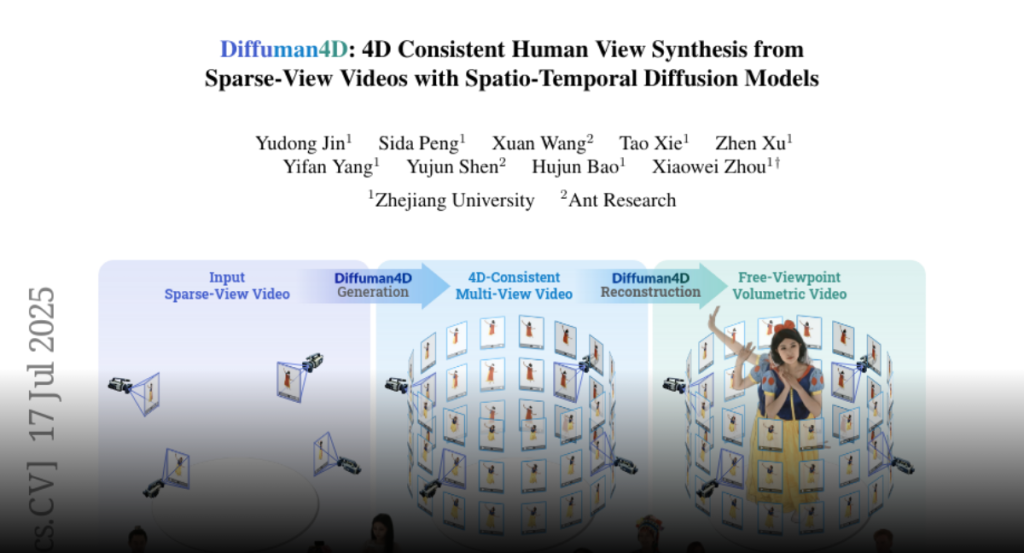A sliding iterative denoising process is proposed to enhance spatio-temporal consistency in 4D diffusion models for high-fidelity view synthesis from sparse-view videos.
This paper addresses the challenge of high-fidelity view synthesis of humans
with sparse-view videos as input. Previous methods solve the issue of
insufficient observation by leveraging 4D diffusion models to generate videos
at novel viewpoints. However, the generated videos from these models often lack
spatio-temporal consistency, thus degrading view synthesis quality. In this
paper, we propose a novel sliding iterative denoising process to enhance the
spatio-temporal consistency of the 4D diffusion model. Specifically, we define
a latent grid in which each latent encodes the image, camera pose, and human
pose for a certain viewpoint and timestamp, then alternately denoising the
latent grid along spatial and temporal dimensions with a sliding window, and
finally decode the videos at target viewpoints from the corresponding denoised
latents. Through the iterative sliding, information flows sufficiently across
the latent grid, allowing the diffusion model to obtain a large receptive field
and thus enhance the 4D consistency of the output, while making the GPU memory
consumption affordable. The experiments on the DNA-Rendering and ActorsHQ
datasets demonstrate that our method is able to synthesize high-quality and
consistent novel-view videos and significantly outperforms the existing
approaches. See our project page for interactive demos and video results:
https://diffuman4d.github.io/ .

